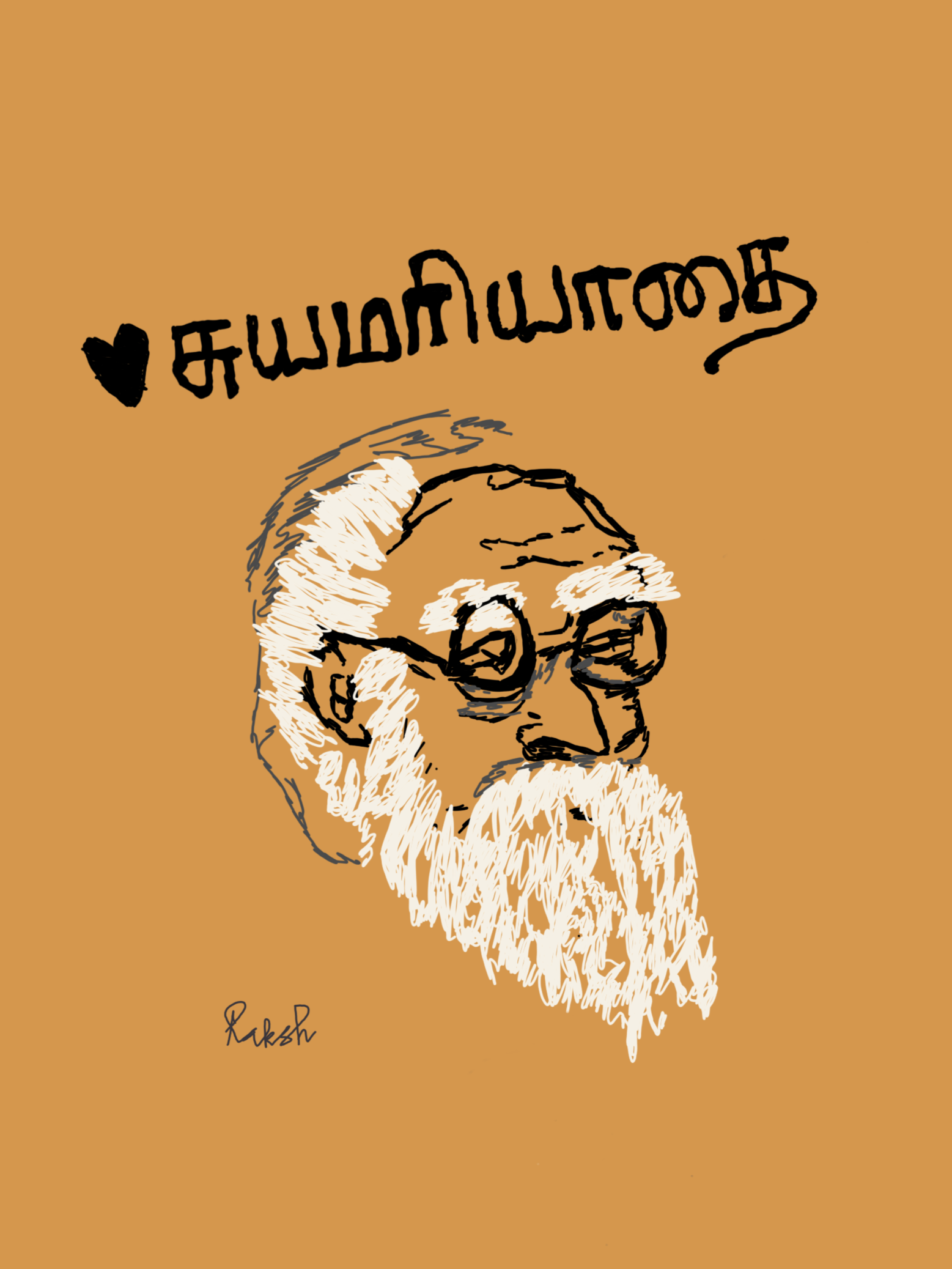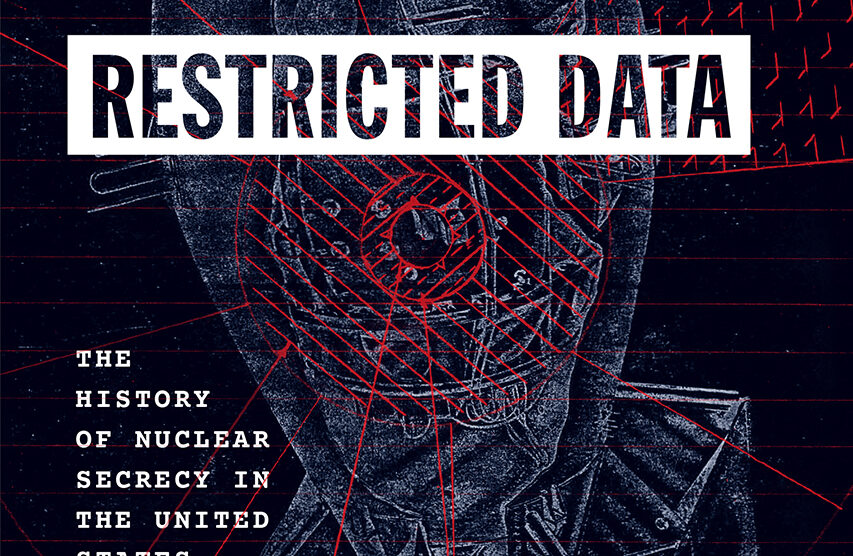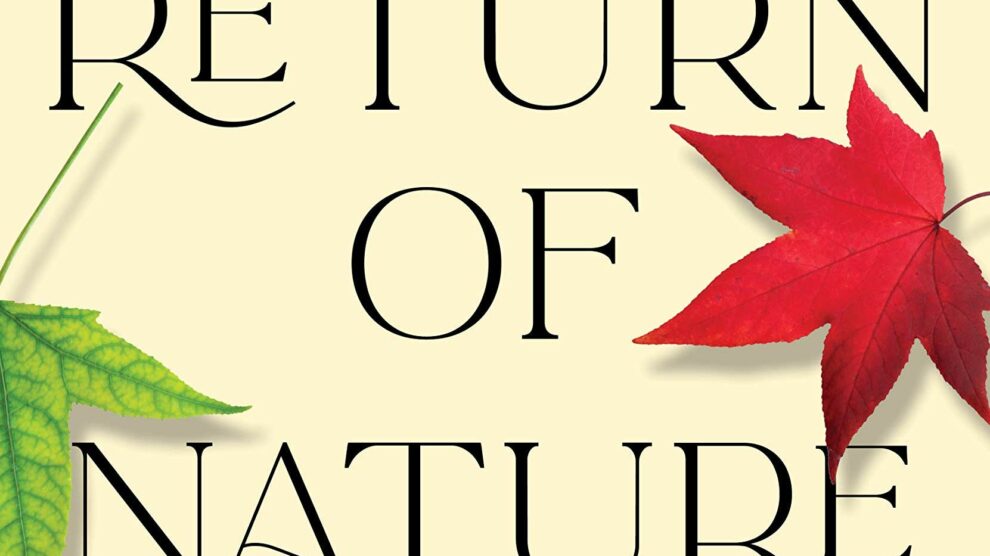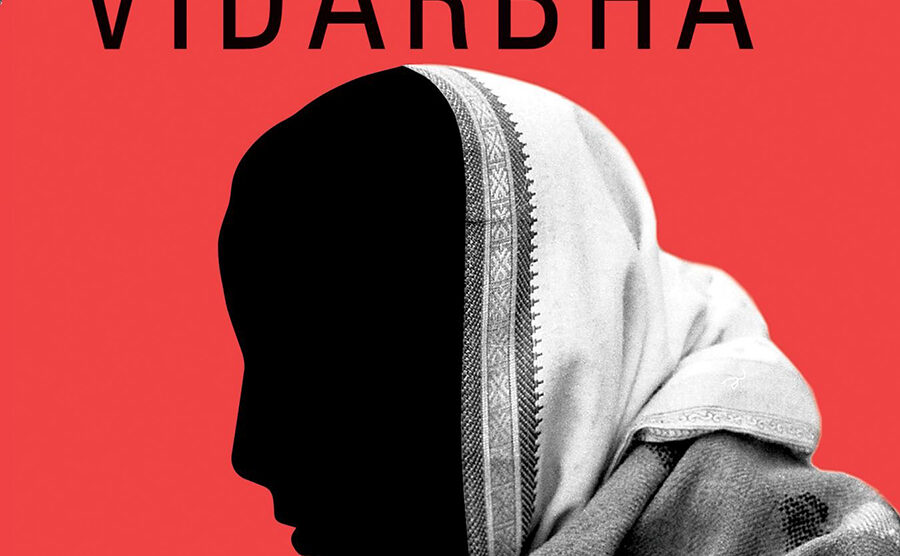
Challenging Illusions: Science & Postmodernism in India’s Ideological Battlefield
Review of Prophets Facing Backward: Postmodern Critiques of Science and Hindu Nationalism in India by Meera Nanda
By Nuzrath Jahan S A
Volume 26, no. 2, Ways of Knowing
In an unprecedented global wave of democracy, the year 2024 marks a pivotal moment in history. More than 50 countries, collectively home to 4 billion people, nearly half the world’s population, are set to elect their governments.2 Within this global context, India’s vote stands out as a critical gauge of the political temperature.
The largest democracy on earth, a nation that emerged from the shadows of colonialism in 1947 to embrace the tumultuous yet vibrant path of self-governance, India is at another crossroads. With the current ruling party, the Bharatiya Janata Party (BJP), on a mission to realize their vision of “Akhand Bharat” or “Hindu Nation,” the stakes are monumental. Through violent political moves such as and the Citizenship Amendment Act (CAA)3, the BJP seeks to reclaim a perceived past glory, justified by aligning science and technology with Vedic principles. The political chessboard is alive with activity; regional parties are engaging in the same religious and caste dynamics the BJP capitalizes on, while the Indian National Congress (INC), once the unchallenged voice of secular India, is now struggling to recalibrate its message. The INC with its anti-caste rhetoric gaining momentum, hints at a potential renaissance of opposition politics, if they could achieve successful regional coalitions. But as of now, the BJP’s victory looms as a likely scenario, with the opposition alliance−India Bloc slowly falling apart.
It is against this backdrop of a nation’s introspective battle for its soul that Meera Nanda’s Prophets Facing Backwards becomes a critical read. Her book’s incisive examination of India’s intellectual and cultural struggles unpacks how the left’s dalliance with postmodernist philosophies inadvertently aided the rise of a right-wing agenda that it purportedly opposes. As we unpack Nanda’s theses, this review aims to explore the urgent question: will India’s secular left recognize its complicity, and realize the potential for science to serve as a beacon for democracy and human progress in these pivotal times? This review is not just an academic exercise, but a timely intervention as we reflect on the future trajectory of a nation at a pivotal juncture in its democratic journey.
The main themes of the book include:
- Rise of Hindu Nationalism: the surge of Hindu nationalism in India, characterized as a fascist movement with traits like state-encouraged violence against minorities, particularly Muslims.
- Clerical Fascism: the concept of clerical fascism, a blend of fascism and religious fundamentalism, particularly in non-Western societies where democratic institutions are less established.
- Critique of Postmodern Intellectuals: the role of intellectuals, particularly those adhering to postmodern ideals. These intellectuals, described as “clerks,” who challenge the universality and objectivity of science, seeing these as excuses for Eurocentrism and mental colonialism, are criticized for abandoning Enlightenment values, and aiding the rise of religious fanaticism and fascism.
- Alternative Modernity and Reactionary Modernism: the phenomenon of alternative modernity, especially in the context of Hindu nationalism, which seeks a return to a mythic past. This is linked with the concept of reactionary modernism, where technological advancement is pursued without the accompanying liberal and secular values.
- Role of Science and Rationality: the defense of scientific reason, modernity, and Enlightenment values, particularly in the face of growing religious fanaticism.
Nanda delves into these themes by:
Deconstructing the ‘Selective Embrace of Science in Hinduism’ aka ‘indigenizing science’: The book highlights the dangers associated with the indigenization of science in the Hindu context, where scientific concepts are distorted to fit nationalistic and religious agendas. This selective endorsement of scientific ideas by the Hindutva or Hindu nationalist forces is contingent on their alignment with the Vedas. Nanda points out how this misrepresentation of science hinders its understanding as a universal endeavor and leads to the rise of “reactionary modernity,” [Pg 19 “Alternative Modernity” as Reactionary Modernism] where science is valued not for its empirical rigor or its universal applicability, but for its utility in supporting religious doctrine. She emphasizes how this approach undermines the very essence of scientific inquiry, which is based on evidence, experimentation, and the readiness to revise beliefs in light of new evidence.
Dissecting the postmodernist appeal of Indian intellectuals: Nanda critically examines the postmodernist stance, which attributes renewed relevance to traditions, local knowledges, and cultures, insisting that these cannot be judged by the standards of rationality set by modern science. She challenges this perspective, arguing that it undermines the universality and progressive nature of scientific inquiry. Nanda attributes the appeal of postmodern critiques amongst Indian intellectuals to “intellectual schizophrenia” – a sense of alienation from the ‘real’ India and a lack of acknowledgement of material reality. a These intellectuals are drawn to ideas of equality, liberty, and fraternity while remaining conscious of their Western origins. This dissonance, fueled by English education and the absence of a progressive indigenous bourgeoisie, led to a Neo-Gandhian romanticization of rural and traditional life.
The legacy of Mohandas Karamchand Gandhi significantly shaped Indian intellectual thought. Gandhi’s philosophy fostered an alliance between emerging urban capitalists and rural peasant masses, leading to a conservative form of modernity that did not fundamentally challenge existing power relations or cultural traditions.4 Post-independence India adopted modern liberal constitutionalism, but this was juxtaposed with unaltered cultural traditions like caste hierarchy. The Gandhian vision was initially counterbalanced by Nehru’s industrial and socialist policies. However, as Nehruvian socialism waned in the 1970s, Gandhian ideals, intertwined with notions of “people’s power” and anti-Western sentiments, was further amplified by the rise of postmodernist thought in the West.
The postcolonial critique by India’s influential urban elite intellectuals like Gayatri Spivak, Homi Bhabha, Ranjit Guha, Gyan Prakash, Partha Chatterjee, Vandana Shiva, Ashis Nandy, Shiv Visvanathan, and Claude Alvares, while intended to empower the marginalized, ironically alienated them from the potential benefits of modernity. She points out that, paradoxically, it is often the urban middle classes, who have benefited from modernization, that champion anti-modernist ideas, rather than the poor, who continue to strive for the fruits of modern development. She argues that these critiques sometimes overlook the actual socio-political dynamics within Indian society such as the Hindu nationalist agenda perpetrated by the right-wing Hindutva and caste-based hierarchy championed by the Vedas and fail to appreciate the extent to which modernization has tangibly improved living conditions for many. The postmodern critique thus became disconnected from the real aspirations of the masses.
Emphasizing the Role of Intellectuals in Challenging Double Standards: Nanda argues that intellectuals have a responsibility to promote a more honest and rational engagement with both religion and science, fostering a culture where beliefs and practices are scrutinized and aligned with empirical evidence and universal principles of reason. Nanda’s incisive critique extends beyond Hindu nationalists, implicating the intellectual complicity of both right and left-leaning scholars in fostering an environment that has abetted the rise of Hindu nationalism as a fascist movement. She identifies a pervasive intellectual dishonesty among left-wing intellectuals who, despite their political leanings, have abandoned the classic cultural ideals of scientific reason, modernity, and the Enlightenment. Nanda emphasizes that their well-intentioned but misguided advocacy for “alternative epistemology” and “local knowledge” has legitimized the Hindu nationalist vision of a “Hindu modernity,” thus intertwining postmodernist thought with regressive ideologies. Nanda’s narrative is unflinching as she holds these intellectuals accountable for delivering the very people they aimed to protect—the non-Western masses—into the hands of hatred, fascism, and religious fanaticism. She calls this clerical fascism.
“Since intellectuals enjoy a relative autonomy from the dominant institutions of their societies, they are expected to challenge the commonsense of their times. In either case, for a liberal, democratic culture to emerge alongside industrial and economic development, there is no getting away from the active cultural work of “educating democracy,” [Pg 19 “Alternative Modernity” as Reactionary Modernism]
Her work is not just a critique but a call to action to reaffirm the historic role of science as an ally of enlightenment, secularism, and democracy, especially in non-Western societies. She aligns with critics like Alan Sokal5 in advocating for rational thought and fearless analysis of objective reality as potent tools against the mystifications promoted by those in power. She places Hindu nationalism within the broader context of these intellectual movements and underscores the urgent need to recover from the relativism that has made postmodernism, despite its appeal in the western historical context, a dangerous bedfellow for reactionary ideologies.
Charting the course of regional and national indigenous reformatory movements: An important part of her analyses in the second half of the book acknowledges Periyar, and Phule’s contributions6 to setting up the social reformatory tone ahead of time. Then she addresses Dr. B.R. Ambedkar’s unique synthesis of John Dewey’s pragmatism and Buddhist philosophy, which he employed as a formidable strategy to counteract the oppressive traditional metaphysics of Hindu society. This approach marked a significant departure from the postmodernist, anti-colonial stance, employing modern science and rational thinking as pivotal tools for social empowerment and reform. Ambedkar’s unique approach in Indian politics lies in his integration of spirituality with social reform, deviating from the Marxist neglect of religion. He recognized that spirituality is woven into the fabric of life in India, requiring continuous engagement and reformation to meet the evolving cultural and material needs of society.

My reflections
As I reflect on Meera Nanda’s insightful exploration, I find my own life story, like thousands of others from mainland India, interwoven with the themes she so eloquently dissects. A native of Melapalayam, a Muslim ghetto where life often follows a predictable path, I can safely say I broke the mold as a first-generation Bahujan Muslim woman. My journey from the alleys of Melapalayam to pursuing a PhD in Environmental & Occupational Health at one of the renowned R1 research-intensive institutions in the US is a testament to the transformative power of education and the professional stature that modernity and the pursuit of science confers.
As a doctor practicing in a rural primary healthcare setting back in India, I was confronted with an intellectual paradox—the call from certain progressive circles to renounce the very title ‘doctor’ to dismantle the supposed power dynamics it entailed. I attended workshops where the discourse of decolonization was robust, where my colleagues, steeped in privilege, contemplated shedding the ‘doctor’ label in favor of a more egalitarian ‘client’ approach. But to me, this was a form of intellectual dishonesty that failed to recognize the individual empowerment derived from such titles, especially for those from marginalized communities.
At a systemic level, embracing accreditation as a ‘doctor’ is not holding onto colonial mindsets; it is a reclamation of dignity and a declaration of my place in the professional world. As an individual, the title ‘doctor’ transcends its historical connotations and stands as a symbol of personal triumph and empowerment. My insistence on being called ‘doctor’ is a challenge to the sexist and patriarchal norms that might otherwise overshadow my achievements and is a call for equity and recognition of my qualifications, on par with my male counterparts. Those who have the luxury to dismiss such designations can choose to do so, but I cannot afford that choice.
Meera Nanda’s critique of the intellectual betrayal by both the right and the left resonates with me. It captures the complexities of decolonization narratives that often overlook the empowerment that modernity and its accouterments can offer to individuals like me. As I stand in the professional realm, the title of ‘doctor’ is my shield against discrimination and my bridge to opportunities that my ancestors could never have imagined. Nanda’s call for a critical engagement with modernity and its socio-political realities echoes my conviction that we must navigate this landscape with nuance and an appreciation for the diverse experiences of those it seeks to serve.
Hailing from Tamil Nadu, the heartland of the social justice movement ignited by EVR Periyar, I’ve lived and breathed the ethos of ‘rationality’ and ‘self-respect.’ Rationality, for Periyar, was the tool to question the status quo, to challenge every norm and belief that binds us to backwardness. Self-respect was about rejecting the shackles of caste and the remnants of colonial rule, embracing a dignity intrinsically tied to our identity as human beings, not as mere pawns in a hierarchical order. This movement, with its profound anti-caste and anti-colonial underpinnings, paved the way for my father to break away from the confines of Melapalayam. It enabled him to grasp opportunities that once seemed unattainable for our family. It was our family’s regional migration to work in a coastal chemical factory that afforded me the precious gift of education, a free medical education that has been the bedrock of my journey as a healthcare professional. As I reflect on the boundless social mobility and the rich clinical and epidemiological experiences my government job has provided, I realize the incalculable debt I owe to this movement of social justice. This movement has uprooted the very essence of caste and colonialism, championing science and reason, not as mere academic pursuits but as the driving force for true liberation and equality.
My pride in my Dravidian heritage is intertwined with my identity, and my title as ‘doctor’ is a declaration of the progress we’ve made and the battles we’ve won against the regressive forces that once sought to define our destiny. I am not just a doctor by profession; I am a torchbearer of the values that Ambedkar, Periyar, and Phule championed values that dismantle oppression, celebrate rationality, and uphold dignity for all, irrespective of caste or creed.
Yet, critiques arise, such as those suggesting Periyar’s leniency towards Islam due to its perceived lack of caste divisions. It is true that the nuanced realities of caste and class discriminations within ‘Islam in India’ itself is often overlooked. Personal experiences, like being distinguished as ‘Rowther’ rather than simply Muslim, or facing bias for being a Tamil Muslim who doesn’t speak Hindi or Urdu, reveal the complex layers of identity within the community.
Therefore, to me, what remains unexplored in Nanda’s book, is the nuanced yet profound impact Hindu nationalism has on the minorities of India—not solely through overt discrimination like the CAA, but through the subtle, pervasive ways, driven by a complex interplay of global influences and localized reactions to nationalist pressures. As a Tamil Muslim, I’ve witnessed my community become increasingly conservative as well. This change was markedly influenced by the return of natives who worked in the Middle East, bringing with them the austere doctrines of Wahhabism7. This wave of imported orthodoxy, supported by groups such as the Tawheed Jamat,8 didn’t just promote adherence to certain Islamic tenets; it actively began to erase the colorful tapestry of our local culture. The changes were drastic and deeply personal. Our vibrant tradition of Kandiri, where we paraded chariots through the streets and exchanged sweets in memory of the departed, was abandoned. The Tawheed Jamat deemed such practices ‘shirk’—the sin of idolatry—because we were, in their view, elevating the dead to a status equal to Allah. Photographs of my beloved ancestors, which had adorned our home, were taken down. The television, once the hearth of our family’s entertainment, was condemned as a vessel of vice. Music, which had filled our home with joy, was banned; I was even scorned as ‘Satan’ for indulging in music. Despite the Tawheed Jamat’s acceptance of modern innovations like vaccines and contraceptives—something traditionally rejected in Islam—their push for a monochrome existence stripped away the rich layers of our local identity.
As a home-grown observant leftist, I can attest to the fact that the situation in India has not changed since the publication of the book in 2003. My personal observations echo the concerns raised in the book: I’ve witnessed the BJP’s investment in temple construction in villages closer to our home, subtly shifting the political and social dynamics, with temples becoming conduits for dispensing patronage and consolidating power. Hindu nationalism, while masquerading as religious piety, also manifests in calls for demographic shifts, encouraging higher birth rates in northern states to alter parliamentary representation—a move that penalizes the southern states for their developmental achievements and population control measures.9 The assassination of rationalists like Narendra Dabholkar and Gauri Lankesh10 underscores a grim reality where voices of reason are silenced by extremism. The brutal crackdowns on student protests against the Citizenship Amendment Act (CAA)11 and the repeal of Article 370 in Kashmir12 highlight the struggles for a secular, rational public discourse. In the shadow of these tragedies, the BJP’s growing influence, particularly in the southern states, raises alarms about the permeation of a singular ideology that appears to co-opt even the marginalized sections of society, such as the Dalits and lower castes, through strategic temple funding and politicization of spiritual life.
Meanwhile, major institutions are witnessing a decline, ceding ground to pseudoscientific narratives under the guise of ‘Vedic science.’ The Indian Science Congress the propagation of unverified claims masquerading as science13 reveal a worrying trend of ideology-driven agendas infiltrating academic spaces. Internationally, figures like Sadhguru, despite their controversial environmental records, are ironically given platforms at major environmental events like COP28 to represent India14.
Thus, India’s secular left stands at a crossroads, reflecting on its flirtation with postcolonial and postmodernist ideologies that inadvertently bolstered the right-wing narrative. In this critical juncture, ‘Prophets Facing Backwards’ serves as a clarion call, reminding us of the vital role of science and rationality in steering the nation away from regressive forces and towards a future anchored in enlightenment and democratic values. At a personal level, this book has been more than an educational endeavor; it has touched upon the core of my being, offering both a lens to view the past and a beacon to illuminate the way forward. It offers pointers on what might get in the way of others who might wish to replicate a journey like mine; the book is itself a call to action anticipating these challenges. Hence, in its scholarship, I find not only the academic rigor but also the empathetic voice that calls for a continued commitment to the struggle for a just society. It stands as a testament to the power of literature to transcend the personal, to speak to the universal, and to inspire action that is as thoughtful as it is resolute.
Prophets Facing Backward: Postmodern Critiques of Science and Hindu Nationalism in India
Meera Nanda
Rutgers University Press, 2023
288 pages
Nuzrath Jahan (MBBS MPH): is a medical doctor from the southern state of Tamil Nadu, India, interested in WaSH and climate justice. Currently a PhD student in IU School of Public HealthMy, her research at IU focuses on evaluating sanitation interventions in interrupting the transmission of infectious diseases.
FB: https://www.facebook.com/Nuz23
IG: thesciencewitch
twitter: @drnuzrath
Notes
- “The Year of Elections – Is 2024 Democracy’s Biggest Test Ever? | Elections News | Al Jazeera.”. The electoral marathon kicked off with Bangladesh on January 7 and spans across India, the United States, Indonesia, Pakistan, Russia, and Mexico.1“Indonesia election 2024: All you need to know| Elections News | Al Jazeera.” “Russia set to hold presidential election in March 2024| Elections News | Al Jazeera.” “Mexico set to elect first female president in historic vote| Elections News | Al Jazeera.” “Is Bangladesh on a path to becoming a one-party state? | Inside Story | Al Jazeera.” “Pakistan to hold delayed elections on February 8, electoral commission says| Elections News | Al Jazeera.” “Will India’s election be free and fair? | Inside Story | Al Jazeera.”
- “Citizenship Amendment Act (CAA) and National Register of Citizens (NRC) – Global Studies Blog.”
- “The legacy of Gandhi: a 21st century perspective |Institute of South Asian Studies.”
- “In Defence of the Objective World | Critical Theory | Eurozine.”
- “Jyotirao Phule, Savitribai Phule, Periyar And Ambedkar | Countercurrents.”
- Mishra, “Islam in India and the Rise of Wahhabism.”
- “All India Thowheed Jamaat – An ISIS Precursor – Holds Anti-Polytheism Conference In India’s Tamil Nadu State.”
- Bureau, “Delimitation Based on Population Is Irrational, Injustice to Southern States.”
- “Explained: Dabholkar-Lankesh murders— What the investigations into violent right-wing activism show.”
- Bhat, “Why India’s New Citizenship Plans Are Stirring Protests.”
- “What’s Article 370?”
- “Indian scientists protest against unscientific claims made at conference | News | Nature.”
- Pundir, “This Climate Guru Is a Celebrity in the US. In India, He’s Accused of Destroying a Forest.”





